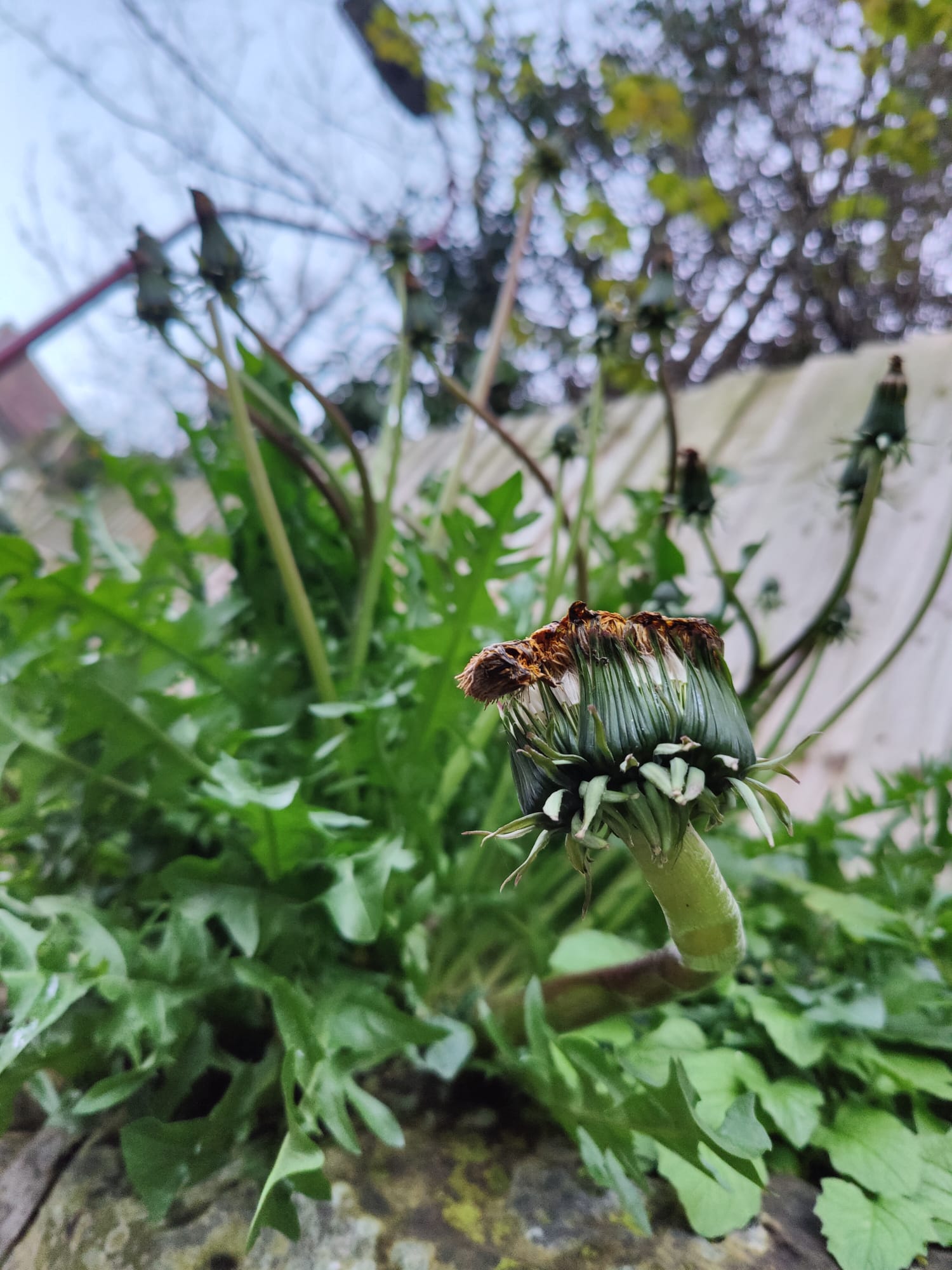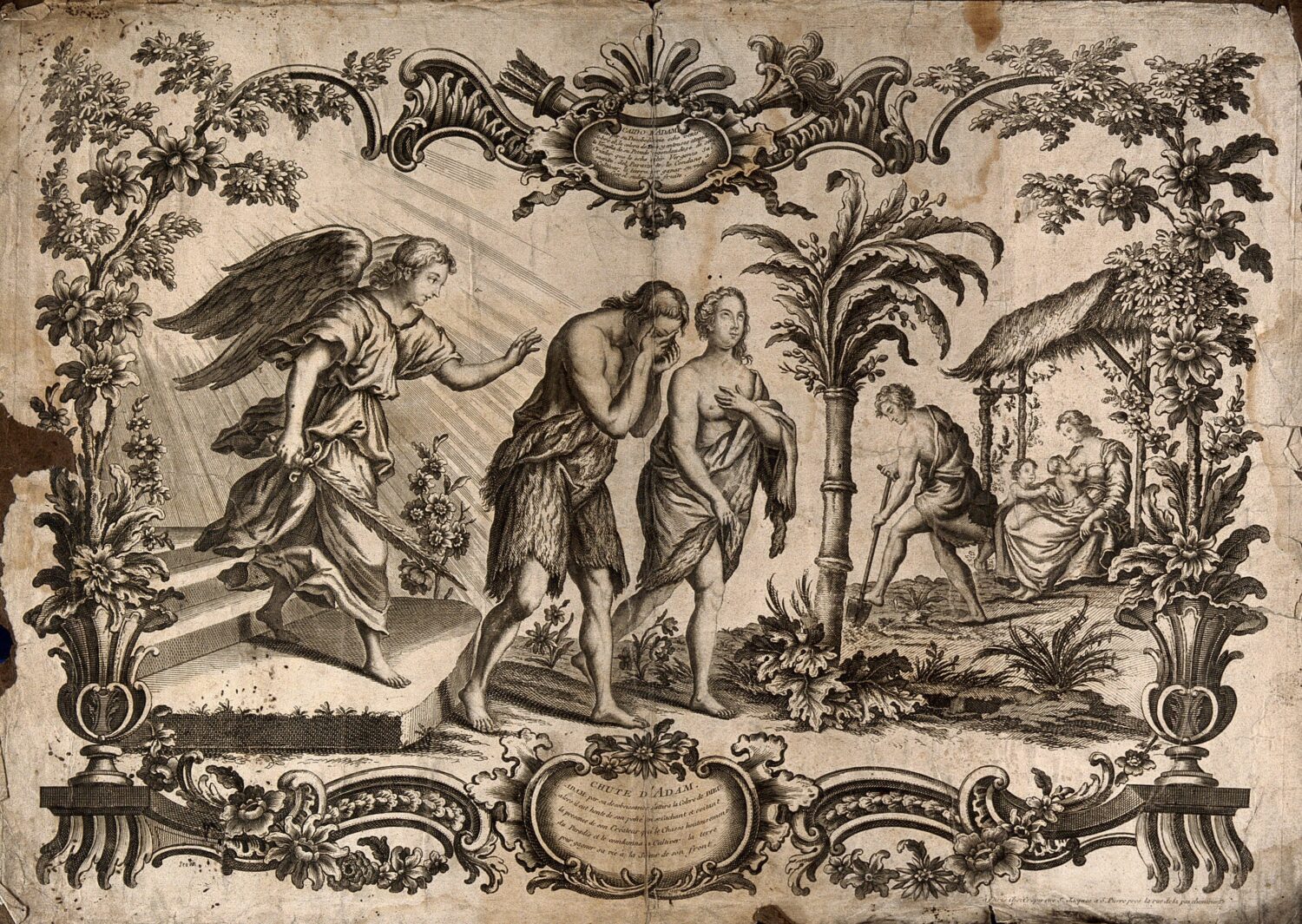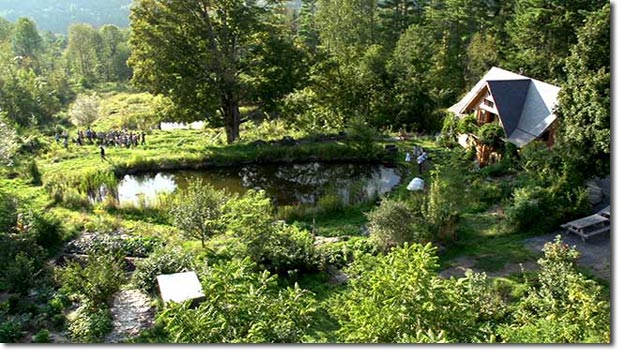An Invitation to Weeds and Wildness

An Invitation to Weeds and Wildness
Written by Elliot Riley
A Taste of the Wild
Tooth of the Lion. Dent du Lion. An evocative name which captures well this flower’s sharp row of snagged leaves, its fierce mane of gold, its bitterness and power, its uplifting energy, and the free reign it takes over a large territory. Supporting the liver, aiding digestion, cleansing the blood and lymph, and delivering a dose of vitamins A,B,C and D, the tooth of the lion is medically marvellous; not to mention delicious. Plucked from walls and lawns in spring, it can be thrown into salads for a peppery kick which helps clear out the body after winter.
The magic doesn’t stop there; its golden flower heads can be mixed with sugar, water and lemon to make a delicious natural beer, which can support gut health; and the taproot, when unearthed, tastes and feels like a shot of espresso. On a wider ecological note, the plant is an excellent early support for pollinators, and due to their hardiness and quantity, they are effective in building up biomass, even in desolate places.
With such an impressive resumé, we might assume that this plant is much praised. Yet for all their flavour, medicinal properties, and ecological functions, dandelions, alongside nettles, cleavers and a host of other “weeds” are frequently dug up, sprayed, or otherwise made unwelcome. We see them encroaching onto our carefully curated spaces, and must constantly battle them back, leaving us locked into an annual dance with nature which is frustrating, destructive, and fundamentally futile. The presence of weeds in our gardens represents the encroachment of wild nature onto our chosen nature, and the sight of a lawn once again covered in yellow flowers perhaps offers a subtle and uncomfortable reminder of how little we are really capable of controlling the world around us.
Undeniably, there is plenty to be said for curating our outdoors spaces into places that make us feel happy and at home; places that express our personalities, that look beautiful to us, and that meet our needs. We can be selective about which plants to invite; filling our gardens with ecologically beneficial, beautiful and/or rare species. Yet very often, the desire to bring certain things into a garden goes hand in hand with the desire to keep other things out. And as with dandelions, many of the things we wish to keep out are good for us, good for the ecosystem, and grow in our gardens more easily than anything else.
As counter-intuitive as it may be, our selective relationship with nature is as ancient as it is perplexing, and leads to some important questions. When did we begin to distinguish between good nature and bad nature? Why did that division last? And can we do anything to change our perception?

The Fall
The relationship between humanity and nature is a complicated one, bringing everything that keeps us alive, and everything which eventually kills us.
An awareness that unknown territory can hide unknown threats must go back to our earliest ancestors, pre-dating our cultural memory by millenia. Walking into unknown territory could mean encountering unknown poisonous plants, hungry carnivores, or defensive herbivores, all of which deserve appropriate respect and fear. Within known territory, the wild might be considered safer, as these threats, though present, could be expected and duly prepared for.
Yet as our ancestors began to transition from nomadic hunter-gatherer societies into settled agricultural communities, the range of our known territory began to shrink, and the distinction between what lay inside the village walls, and and what lurked in the wilderness abroad became more pronounced.
According to some historians, the book of Genesis is a cultural memory of that transition; moving from a symbiotic relationship with nature to one of alienation, in which humanity no longer understood itself as part of nature, but a thing separate from, and situated above it. The idea of separation is expressed when God creates man to “rule over the fish in the sea and the birds in the sky, over the livestock and all the wild animals, and over all the creatures that move along the ground.” But the moment of disharmony occurs when humanity is cast out of Eden. No longer were we able to simply walk and eat; suddenly, we had to work the ground in order to survive.
After eating the forbidden fruit, God tells Adam that “cursed is the ground because of you, through painful toil you will eat food from it all the days of your life, it will produce thorns and thistles for you, and you will eat plants of the field” . In other words, once we became reliant on the fields to eat, the thorns and thistles, those elements of nature which exist in the wrong place, became not just a nuisance, but a curse to be remembered.
Over the years, scripture and the church continued to advocate for control over nature by associating the wild and uncontrolled with evil. It’s in the wilderness, the place of unknown nature outside of the village walls that Christ is tempted by the devil, and it’s no coincidence that this horned, goat-footed fellow that the church taught us to fear looks like Pan, the Greek God of the forest.
Our collective mistrust of the unknown and the uncontrollable is evidenced and was reinforced again by Descartes in the 1600s. In his process of philosophical enquiry, Descartes recognised that his perceptions of the world were often misleading, and led to false ideas. For example, a stick encountered in a river could appear bent, when in reality, it was not. In an attempt to feel secure in his understanding of the world, Descartes decided to discard any idea which could not be proven as absolutely, universally true.
His classic line “I think, therefore I am” served as that foundational, inarguable truth – based on the idea that in order to be misled, or mistaken, he must still exist as a thinking mind. His sceptical belief in the world was then built back up on the premise that truth could only be experienced in his rational mind, and could not be found in the uncertain world outside of him. This meant that only the manifestations of the rational mind of man (a product of God) could be good and worthy.
The cultural importance of this idea cannot be underplayed, and arguably, though indirectly, shows up in the popularity of the lawn. Coincidentally developing in the 1600s, the grass lawn served as an indicator of power and wealth; demonstrating the ability of the mind to implement perfect control over nature, alongside sufficient resources to leave land uncultivated and carefully maintained. This image of the immaculate lawn may no longer be the sole reserve of the absolute wealthiest in society, but in classic American suburban culture, as well as in other cultures around the world, it is still an indicator of propriety, good taste, and a sound mind. In contrast, the overgrown lawn suggests neglect, distraction, and a lack of respect for the neighbourhood.
This train of historical thought not only shows the context from which our love of neat-and-tidy natural spaces arises, but also explains why the mono-cultural field is sometimes considered an excellent use of land. Through the dominion of the rational human mind over nature, we have created a system that feeds unprecedented numbers of people, with carefully controlled inputs and outputs. The unplanned presence of any animal or plant which is not designed into that system is considered a threat, so pesticides and weed killers are used to maintain our control.
Clearly, our current relationship with land, in our homes, communities, and in the production of food stems from an understanding of nature based upon fear, mistrust, and ostentatious shows of wealth. Yet as we are learning, our attempts to control nature completely are short-lived at best, and ecocidal at worst; both in the garden and in our global food supply.

In With the Old, In with the New
It would be wonderful to work towards a world in which every garden has a rewilded area, in which every farm is a permaculture paradise, in which every street is bordered by syntropic food forests.
Yet this article started with weeds, so let’s return to those humble roots.
Sooner or later, weeds will show up whether we want them to or not. It’s simply how nature works. So rather than desperately trying to clear them, why not develop a more intentional, trusting relationship with them?
This doesn’t mean allowing nettles to overrun your vegetable patch – but it might mean allowing a small area, well pruned and trained, to provide tea, antihistamines and a shelter for over 40 species of insects. Rather than spraying your patio with roundup to clear the dandelions, why not treat them as a delicious, freely available crop? Rather than digging up your brambles, why not train them around an arch, up a fence, or within a round wicker ring? Their leaves are excellent for colds, their berries are delicious, and they provide an invaluable refuge for birds. And they’ll grow whether we want them to or not.
We don’t have to let nature completely invade the spaces we make for ourselves. And it would be overly optimistic to assume that fashions would change enough to allow this process to happen. But we could begin a process of co-creation with nature… or, daresay, symbiosis.